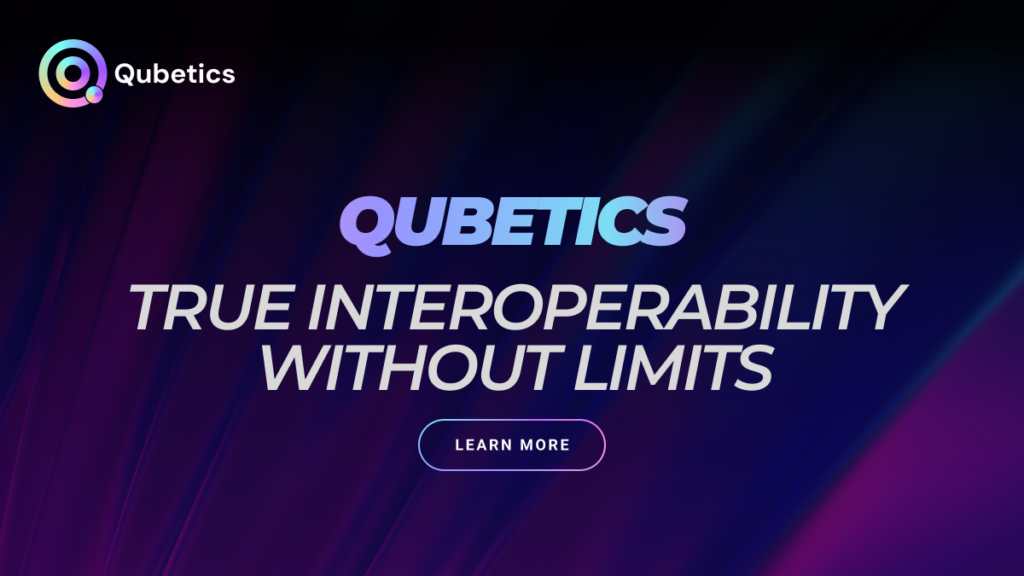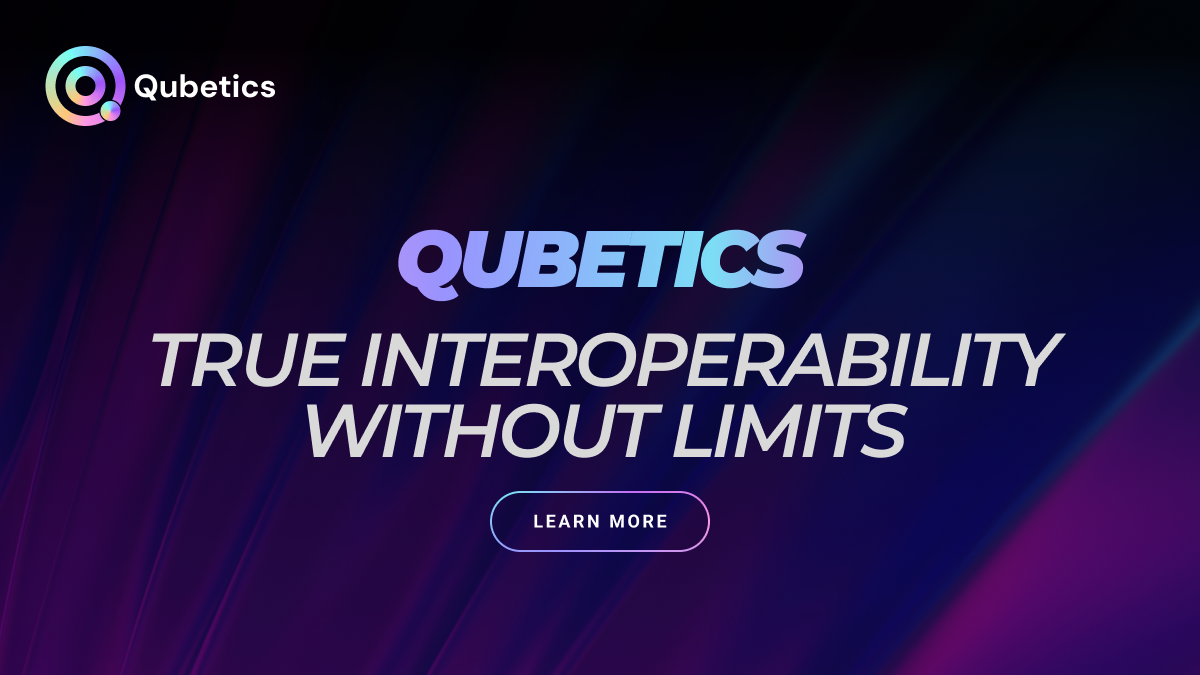Arizona’s decision to legalize and launch its Bitcoin and digital assets reserve has rapidly accelerated confidence in blockchain-based assets. By allocating up to 10% of its $3.14 billion in public funds to digital assets, Arizona has become the second U.S. state—after New Hampshire—to formally embrace crypto reserves. Governor Katie Hobbs signed House Bill 2749 into law, creating a framework that supports the direct use of Bitcoin, NFTs, and other digital assets. The bill mandates on-chain auditability and compliance protocols, setting a precedent for future public fund management in digital assets.Among the strongest contenders benefiting from this regulatory tailwind are Qubetics, Stellar, and Arweave.
The move aligns with macro-level shifts toward decentralization and risk diversification in the public finance space. The broader crypto market has responded positively. States and institutions are increasingly viewing blockchain as not only viable but essential for future-proofing their financial systems. Regulatory clarity and early adoption by governments are catalyzing renewed interest in strategic, utility-driven digital assets that align with scalable, compliant infrastructure.
Each project brings a distinct value proposition—Qubetics with seamless interoperability, Stellar with low-cost cross-border transactions, and Arweave with permanent decentralized storage. Together, they represent the best crypto to invest in May 2025 for community members seeking meaningful participation in blockchain’s next phase. Qubetics, in particular, is addressing legacy inefficiencies through real-time multi-chain compatibility, offering practical solutions for global users.
Qubetics ($TICS): Interoperability Engineered for Scalable Blockchain Adoption
Qubetics is redefining blockchain interoperability for businesses, developers, and everyday users. By providing cross-chain architecture and seamless data portability, it enables smart contracts and decentralized apps to interact across networks without additional layers or bridge risks. This solution drastically reduces friction for professionals transacting across platforms, developers building Web3 applications, and enterprises integrating blockchain infrastructure.
For example, a logistics platform operating on Ethereum can instantly sync with a payment app on Binance Smart Chain or a digital identity system on Polkadot—all through Qubetics’ native interoperability stack. This creates a seamless, secure, and efficient ecosystem where data flows without fragmentation, eliminating the need for siloed networks or manual swaps. Professionals, cross-border consultants, and enterprises now have a unified tool to engage with multiple chains through a single framework.
Qubetics Presale: Entry Stage, Performance, and ROI Incentives
The crypto presale for Qubetics is now in its 33rd stage. Over 511 million $TICS tokens have been sold to more than 25,900 holders, raising $16.7 million so far. The token is priced at $0.2302 in the current round, offering significant opportunity for new entrants seeking long-term utility.
Participants from Stage 1, who entered at $0.01, are now looking at a 2,202% ROI. Still, even Stage 33 remains lucrative. Analyst projections indicate that at $1, the ROI would be 334%. At $5, ROI increases to 2,071%. A $6 valuation pushes ROI to 2,505%. At $10, the gain would be 4,243%, and at $15 post-mainnet, returns could reach 6,414%.
With each stage, token availability tightens, and value perception grows. Entry at Stage 33 offers a strategic entry point for backers who seek scalability, functionality, and forward compatibility in a blockchain ecosystem. With momentum increasing, Qubetics continues to define the best crypto to invest in May 2025.
Stellar (XLM): Financial Inclusion Meets Cross-Border Speed
Stellar is a long-standing name in the blockchain world for a reason. Launched in 2014 by Jed McCaleb and Joyce Kim, it was built to facilitate fast, low-cost cross-border payments, particularly in underbanked markets. Operating on the Federated Byzantine Agreement (FBA), Stellar avoids traditional mining, achieving rapid transaction finality at a fraction of the cost of legacy systems.
As of May 2025, Stellar trades at approximately $0.2714 with a market cap of $8.4 billion and a circulating supply of nearly 31 billion XLM. It continues to serve as a decentralized layer for banking alternatives and partnerships with major financial institutions that seek blockchain infrastructure without the volatility or risk associated with proof-of-work systems.
Stellar is ideal for remittance providers, NGOs, and fintech apps aiming to connect global users without the high fees of traditional systems. Its scalable settlement layer and strong compliance tools position it as one of the best crypto to invest in May 2025, especially for buyers focused on payment efficiency and adoption in real-world financial systems.
Arweave (AR): Decentralized Data Storage With Long-Term Utility
Arweave is tackling one of blockchain’s most under-addressed challenges—permanent data storage. Using its unique proof-of-access consensus model, Arweave allows users and developers to store information on a decentralized web layer known as the “permaweb.” This allows for immutable, censorship-resistant access to data with no recurring fees.
Trading at approximately $7.25, Arweave holds a $474 million market cap with a capped maximum supply of 66 million AR tokens. Its model rewards miners for maintaining storage over time, making it ideal for use cases such as archival storage, decentralized publishing, open-access research, and public records preservation.
Arweave saw a 6.21% price increase over the last 24 hours, driven by renewed interest in data sovereignty and content preservation tools. For developers and institutions that need long-term data integrity, Arweave offers a scalable, cost-effective solution. Its ongoing relevance and consistent innovation make it one of the best crypto to invest in May 2025 for infrastructure-focused participants.
Final Thoughts
Market sentiment has shifted decisively as regulatory frameworks catch up with technological innovation. Arizona’s state-backed Bitcoin reserve law marks a historic turning point, demonstrating that digital assets are becoming a legitimate component of sovereign finance. This growing acceptance sets the stage for utility-driven projects to gain momentum.
Qubetics offers a solution-first model built around interoperability and multichain access—exactly what forward-thinking builders and professionals demand. Stellar continues to lead in financial inclusion and real-time global payments, while Arweave provides decentralized permanence in a world where data longevity is critical.
Together, these three projects represent the best crypto to invest in May 2025. Each one stands at the intersection of utility, innovation, and strategic timing—making them powerful candidates for community members looking to position ahead of the next wave of adoption.
For More Information:
Qubetics: https://qubetics.com
Presale: https://buy.qubetics.com/
Twitter: https://x.com/qubetics
FAQs
- Why is Qubetics considered the best crypto to invest in May 2025?
Qubetics offers unmatched interoperability tools, an active presale, and infrastructure-ready tools like QubeQode and Qubetics IDE. - How does Stellar support financial inclusion?
Stellar enables low-cost, fast cross-border transactions using a scalable consensus model, ideal for reaching underbanked regions. - What makes Arweave unique among crypto projects?
Arweave provides permanent, decentralized data storage using proof-of-access, suitable for long-term archiving and open-source publishing. - How can someone participate in the Qubetics presale?
Stage 33 is open, with $TICS tokens priced at $0.2302. Over 511 million tokens have been sold to 25,900+ early adopters. - What kind of ROI is possible for Stage 33 Qubetics participants?
Depending on future pricing, ROI could range from 334% at $1 to 6,414% at $15 post-mainnet, based on analyst models.
Press releases or guest posts published by Crypto Economy have been submitted by companies or their representatives. Crypto Economy is not part of any of these agencies, projects or platforms. At Crypto Economy we do not give investment advice, if you are going to invest in any of the promoted projects you should do your own research.







